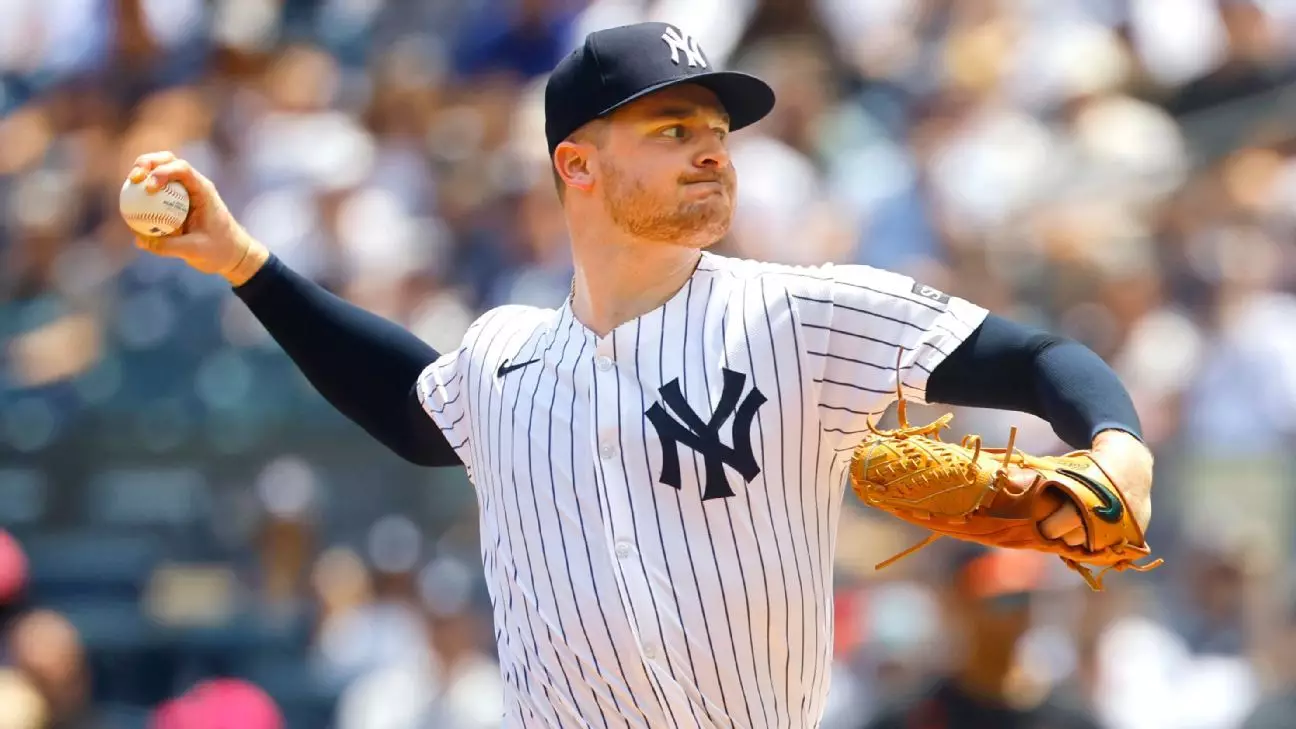The recent announcement that Clarke Schmidt will almost certainly undergo Tommy John surgery marks another dismal chapter in the Yankees’ ongoing pitching crisis. As one of their promising young stars, Schmidt’s injury not only weakens the team’s immediate rotation but also exposes a disturbing pattern of fragility that threatens the franchise’s competitive viability. The Yankees, who pride themselves on a history of resilience and success, now find themselves in a perilous position where their pitching staff is riddled with injury and uncertainty. This relentless string of setbacks raises significant questions about the franchise’s approach to player health management, developmental strategies, and overall roster depth.
What makes Schmidt’s situation even more symptomatic of a larger issue is the recurrence of Tommy John surgeries within the organization. His previous surgery in 2017 was supposed to be a thing of the past, yet here we are again. The Yankees’ failure to build a resilient pitching pipeline that can withstand the grind of a grueling 162-game season underscores a systemic vulnerability. Reliance on pitchers with histories of TJ surgeries, coupled with insufficient injury prevention measures, indicates a dangerous complacency that could jeopardize future seasons. The franchise must confront the uncomfortable truth: their approach to pitcher health is inadequate, and years of neglect might be catching up with them.
Short-Term Pain, Long-Term Consequences
Schmidt’s injury is more than just a personal setback; it’s an ominous sign for the Yankees’ ambitions this season. With the starting rotation already decimated—Gerrit Cole’s Tommy John surgery, Luis Gil’s severe lat injury, and Ryan Yarbrough’s strained oblique—there is an urgent need to reassess their starting options. The Yankees’ inability to keep their pitchers healthy has turned what was once a strength into a glaring weakness. This instability paints a bleak picture of their prospects for sustained playoff success and highlights deeper organizational flaws.
The reliance on internal options such as Carlos Carrasco, Allan Winans, and young prospects like Cam Schlittler is a gamble that might not pay off in the short term. Boone’s decision to keep JT Brubaker in the bullpen as a long reliever reflects an emergency solution, not a strategic plan. The Yankees appear to be caught in a cycle of patchwork fixes rather than proactive, comprehensive roster planning. The upcoming trade deadline feels less like a strategic move and more like a frantic attempt to stave off catastrophe—signaling a franchise on the brink of desperation rather than confident dominance.
The Cultural and Management Failures Behind the Fracture
Underlying these injury issues is a fundamental question about the Yankees’ organizational culture. Are they fostering an environment that prioritizes long-term health and sustainable development, or are they rushing pitchers into demanding roles in pursuit of immediate results? The pattern suggests the latter. Modern sports science has revolutionized injury prevention, yet the Yankees seem to be lagging behind. They are, perhaps unwittingly, exposing their players to overuse and inadequate recovery protocols, leading to the current avalanche of injuries.
Moreover, the team’s approach to their pitching staff reveals a misguided emphasis on quick fixes rather than genuine development. Relying on veteran signings like Carrasco or high-risk prospects without a clear plan for injury mitigation is shortsighted. The franchise’s historical identity—built around competitive excellence and resilience—requires them to rethink their priorities. If the Yankees continue to prioritize short-term wins over player health and long-term sustainability, they risk becoming a cautionary story rather than an example of baseball excellence.
The Narrow Road Ahead: Strategic, Yet Compromised
As the trade deadline looms, the Yankees face the stark reality that their playoff hopes hinge on their ability to reconstruct their rotation under duress. Relying on external acquisitions such as Max Fried or Marcus Stroman may provide temporary solutions, but these moves are band-aids on systemic issues. The Yankees need a comprehensive overhaul—not just of their roster but of their philosophy towards player health and development.
In the end, Schmidt’s injury and the rotation’s precarious state serve as a stark warning about the fragility of a team that once seemed invincible. If the Yankees are to reclaim their former glory, they must address the root causes of their injury epidemic and embrace a more prudent, player-centric approach. Otherwise, they risk becoming a franchise haunted by what could have been—a team crippled not only by injuries but by their own organizational complacency.


Leave a Reply